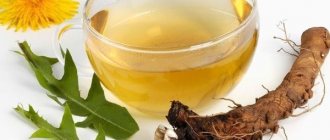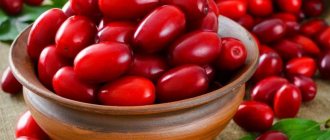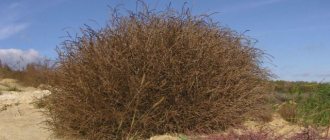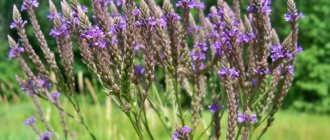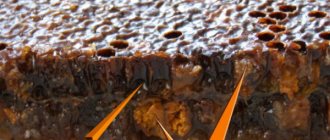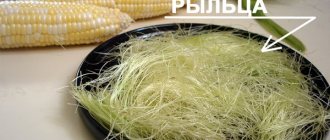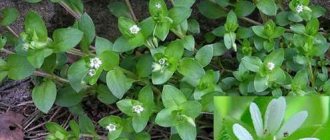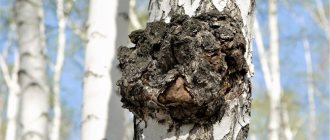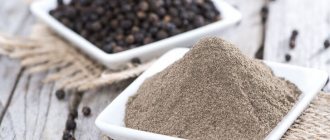basic information
Thorn (Prunus Spinosa L.) is a thorny, dense shrub that grows to a height of 1-3 m. Its fruits are small, round, dark blue in color, and have a tart, sour taste.
The shrub blooms in March, April and May with white flowers. This is a relative of the plum, which is why the sloe is sometimes called the “tart plum.”
In folk medicine, the bush is considered a panacea - it helps the digestive system and kidneys, and acts as a natural disinfection. The fruits can serve as raw material for a number of drinks, teas, wine, and jam.
The advantage is the ability to use almost all shrubs. Sloe leaves help with kidney problems. The healing properties of flowers include a diuretic effect and relief of urinary problems. The benefits of berries are to strengthen the body, stimulate digestion, help with cramps, vomiting and diarrhea.
Planting and caring for thorns
Prickly thorns are planted in garden plots in early spring. The soil is preferably fertile, neutral acidity. The main condition is good soil drainage. Abundant moisture has a bad effect on the development of the root system and can lead to disease and death of the root system.
Thorny thorn is a light-loving shrub that prefers open sunny places.
It is better to prepare a hole for planting in the fall by adding natural fertilizers. In the spring, after the soil has settled in the hole, seedlings are planted. The distance between the bushes should be about 2-3 m. If you plan to create a hedge - 1.5 m. For planting, it is recommended to take two-year-old seedlings with a well-developed root system. After planting, the shoots are shortened, allowing the plant to pay more attention to the development of the rhizome.
Every year, in early spring, sanitary, formative pruning is performed. Watering should be moderate, depending on weather conditions. Excessive moisture harms the plant. An adult crop has enough natural moisture; only during dry periods does it require additional moisture.
To improve fruiting, thorns must be regularly fed with fertilizers. For this, humus and mineral fertilizers are used. With age, fertilizing becomes more and more necessary to maintain productivity.
Reproduction
The plant reproduces by seed and vegetative methods.
The fastest propagation option is root shoots. It is formed in every adult bush.
When sanitary pruning, it must be removed, otherwise the intensive growth of shoots will soon fill the entire garden area. Such root suckers are ideal for propagating the bush. They are carefully separated and transplanted to the main place of growth.
Seeds are planted in the fall, during the winter they undergo natural stratification, and the first shoots appear in the spring. The seedling should be transplanted to its main growth site at the age of two.
The prickly thorn is practically not susceptible to diseases and pests. The only thing that can threaten is gray rot, which appears from excessive soil moisture. In such cases, the shrub needs to be treated with special preparations, for example “Horus”.
Growth and collection
Wild thorn grows along the edges of meadows, along roads, on rocks, in forests. It looks for sunny and dry places with a lot of calcium in the soil.
All parts of the bush are collected for medicinal purposes. The flowering part is collected during full flowering. One way to collect flowers is to shake them onto a clean canvas, previously laid under the bush. The flowers then get rid of the leaves and branches, which also fall onto the canvas.
The fruits are picked by hand, always ripe and blue, into a basket or box. When collecting raw materials for harvesting, it is important to protect your fingers with thick gloves - a puncture with a thorn thorn can lead to the formation of an infected wound!
Botanical description
Thorn is a fairly tall shrub, growing up to 3.5-4.5 m in height . Some species are presented in the form of low-growing trees up to 5 m high. The thorny branches are completely covered with sharp spines.
The plant blooms in April-May, depending on the region of growth. The flowering of the thorn is very beautiful - at first, white flowers abundantly cover the branches of the bush, and after a while the leaves open. During flowering, bees collect pollen and nectar, so the plant is classified as a honey plant.
Thorn bush in bloom
Sloe leaves reach a length of 5 cm and have an elliptical shape with jagged edges . The brownish-reddish wood of the shrub is used to make a variety of small-diameter carpentry and turning products and is valued for its strength and hardness.
Thorn is found in steppe and forest-steppe zones, on the edges of forests and cutting areas, steep river banks and along roadsides, often forming impenetrable thickets. The roots of thorn bushes strengthen slopes well and prevent soil erosion , which is why they are planted along river banks and in ravines. In landscape design, shrubs are used as hedges.
The plant's habitat includes Western Europe, Asia Minor, Iran, Tatarstan, Ukraine, the European part of Russia, Crimea and the Caucasus, and in the mountains the shrub is found at an altitude of 1200-1600 m above sea level.
Sloe fruits are black and blue in color, round in shape and about 12 mm in diameter . The outer part of each fruit is covered with a bluish waxy coating, and inside there is one wrinkled bone.
Read also: Cold accumulator in the freezer
Drying and storage
The only way to prepare flowers for the winter is drying, carried out by spreading them in a very thin layer, in full sunlight. If the weather is bad, artificial heating is used to 40°C at a layer height of up to 2 cm. Carefully lift the flowers during drying.
The berries are dried artificially at temperatures up to 40°C. It is best to dry on sieves in layers up to 4 cm. They need to be mixed from time to time. Well-dried fruits are hard, wrinkled, and blue-black in color.
If the fruit is well dried, it does not stain your fingers when pressed. The bark and roots are dried in a similar way (pre-cut into small pieces).
Dried raw materials are stored away from light and dampness (in glass containers and paper bags), otherwise they become unusable!
Active Ingredients and Health Benefits
The beneficial properties of berries and other parts of the bush are due to the content of the following substances:
- vitamins A, C, E,
- minerals,
- flavonoids,
- high percentage of tannins, giving the typical tart taste,
- cellulose,
- carbohydrates,
- cyanogenic glycoside amygdalin (a toxic substance found in the bone),
- pectin,
- organic acids, including ascorbic acid.
Beneficial properties of thorns for the body:
- Immune system support.
- Detoxification of the body.
- Protecting cells from free radicals.
- Antiseptic effects.
- Cancer prevention.
- Digestive support.
- Removal of bile.
- Adjusting the chair.
- Elimination of flatulence and diarrhea.
- Cleansing the digestive tract.
- Strong diuretic effects.
- Cleansing and improving kidney and urinary tract function.
- Regulation of blood pressure.
- Removing carcinogens from the body.
- Heart benefits – preventing cardiovascular disease.
- Normalizing blood sugar levels is beneficial for diabetes and preventing the development of the disease.
Thorn: benefits and harm for men and women, chemical composition of the berry
Sloe fruits contain many useful substances, the main ones include:
- Vitamins B, E
- Ascorbic acid
- Sahara
- Essential oils
- Cellulose
- Amino acids
- Potassium, calcium and other trace elements
As for the benefits of sloe berries for men and women, they are great.
Blackthorn fruits have the following benefits for the human body:
- By consuming these fruits in moderation, you can tidy up the functioning of the stomach and intestinal tract and reduce the chance of developing gastritis, gastroduodenitis and peptic ulcers. Thorn also helps remove gases from the body, so it is useful for those people who suffer from flatulence.
- Thorn removes harmful substances, toxins and waste from the body.
- Strengthens the body's immune system, improves its protective properties.
- Plums have a beneficial effect on the functioning of the liver and kidneys, improving it.
- Hypertensive patients are advised to take these fruits, as they can lower blood pressure and improve their general condition.
- Thorn is also useful for people with heart ailments. In this case, it strengthens blood vessels and improves the functioning of the cardiovascular system.
- Eating these fruits prevents increased cholesterol in the blood.
- Sloe berries can also act as an antipyretic and anti-inflammatory agent, which is why decoctions and useful infusions are often made from them.
Benefit
- Sloes cope well with indigestion.
- The fruits are also used to get rid of extra pounds. Thorn improves and normalizes metabolic processes in the body, thereby accelerating the process of getting rid of fat.
- Sloes are also useful for the skin, it makes it more elastic, elastic and toned.
- With the help of these fruits you can partially or completely get rid of nausea, vomiting and dizziness.
- For men's health, the fruits of the prickly plum are also extremely important. Thorn helps prevent the development of benign prostate tumors and improves men's health.
- For women, it is appropriate to consume thorn fruits during and before menstruation, as they relieve irritation, tension, and pain. The fruits also help prevent the development of benign tumors in the breast.
- Sloes can be used as an antiseptic during colds and inflammatory processes in the body.
However, not only can thorn fruits bring benefits, they can also harm our health.
You should use the turn with extreme caution in the following cases:
- If you are allergic to these fruits.
- The presence of gastritis, gastroduodenitis, peptic ulcers and other serious ailments of the gastrointestinal tract.
- You should not eat thorn fruits on an empty stomach, as they contain quite a lot of acid, which can irritate the gastric mucosa.
May be harmful
- Small children and adults who suffer from constipation should not eat prickly plum fruits.
- With increased stomach acidity.
- While carrying a child.
The chemical composition of sloe varies depending on the geographic region, but the base remains the same. The fruits contain:
- glucose, sucrose and fructose;
- pectin;
- tannins and aromatics;
- organic acids;
- vitamins A, C, E, B₁, B₂, PP;
- iron, potassium, calcium, sodium, phosphorus, magnesium, iodine, cobalt, zinc, manganese, chromium;
- essential oil.
The energy value of fresh sloe fruits is 49-54 kcal per 100 g.
Sloe bush with fruits.
The tart and sour berries of wild plums ripen in July-August, but at this time they are not picked, because they are practically inedible, which is due to the high content of tannins.
Fruit harvesting usually begins after the first frost. During the freezing process, the chemical composition of sloe fruits changes - the amount of organic acids and tannins decreases, the berries lose their astringency and become tasty.
From one adult damson bush, up to 12-15 kg of fruits are harvested, which are characterized by good shelf life and transportability.
Tightening effects heal and soothe
Traditional medicine recommended using tart plum wherever it was necessary to tighten something and speed up healing. Treating inflammation, stopping diarrhea, flatulence and even reducing bleeding - these health problems were solved with the help of blackthorn.
1 tsp a mixture of leaves, bark and flowers, poured with 250 ml of boiling water and infused for 15 minutes, will alleviate digestive problems, speed up the treatment of stomach acidosis, relieve exhaustion, fatigue, cleanse the blood and inhibit all types of inflammation.
This tea can be used for skin affected by acne or inflammatory processes (used in the form of compresses or rinses).
Effects on the body:
- Benefits for women - reducing the risk of nervous diseases, alleviating the symptoms of PMS and menopause, reducing pain during menstruation.
- Benefit for men - normalization of the prostate condition, prevention of diseases of this organ, incl. adenomas.
- Benefits for children - tart plum is recommended to be included in the children's diet for about 2-3 years, decoctions from the bark and roots (antipyretic) - from 1 year.
- Benefits for pregnant women - the medicinal properties of sloe berries include relief from nausea, which is why they are recommended for toxicosis.
Beneficial properties of terene for the human body
If in many medicinal plants one part has healing power, then the thorn is unique in this regard - not only its berries, but also leaves, roots, flowers, branches and bark are used for medicinal purposes.
fruit fruit
Sloe berries are eaten fresh, and also dried or prepared from them into jams, preserves, and pasteurized juices. The fruits of this fruit have a lot of useful properties :
- normalize microflora and improve intestinal motility, relieve flatulence;
- remove harmful substances from the body and reduce slagging ;
- relieve insomnia , increased irritability, nausea and shortness of breath;
- reduce and normalize the weight of patients . A specially developed diet includes sloe berries, which help burn fat deposits and normalize metabolic processes;
- strengthen the walls of blood vessels , lower blood pressure and cholesterol levels in the blood, reduce the risk of developing heart disease;
- improve the condition of the kidneys and liver in various pathologies;
- strengthens the immune system , mobilizes the body's defenses;
- are a prophylactic against the development of prostate adenoma, normalize the functioning of the prostate;
- strengthen gums;
- reduce the pain of menstruation .
Flowers and leaves
Sloe flowers are collected during their full bloom, dried in a dark, ventilated area and stored in tightly closed jars (glass or tin) out of reach of sunlight. They mainly use a decoction or tea from flowers, which have medicinal properties :
- cleanse the blood and remove toxins from the body;
- relieve skin pustular and erysipelas , help with furunculosis;
- cleanse the liver , normalize intestinal function;
- help restore metabolism ;
- have a calming effect on insomnia and neuralgia ;
- serve as a diuretic and diaphoretic.
Healing tea is brewed from sloe flowers : 25 g of flowers are poured into 0.5 liters of boiling water and the container with the drink is wrapped for 10-15 minutes to infuse. Tea made from thorn flowers is drunk as usual without strict dosage, and is also used for external use as lotions.
Decoctions of thorn leaves have the same properties as flower decoctions . To prepare them, the leaves are plucked in mid-summer, after the bush has finished flowering. They are dried and stored in the same way as flowers, and the prepared decoctions are drunk like regular tea.
Roots, shoots and bark
To preserve the healing power of the plant, it is important to harvest raw materials at the “right” time:
- The roots are dug up in the fall, dried for 2-3 weeks in the open air , and then dried in the oven. Dried roots can be stored in canvas or cotton bags for up to three years.
- Twigs and young shoots are collected in early summer , dried in the open air and stored for a year.
- The bark is removed from the bush in early spring , before the plant blooms. Drying and storing the bark is carried out similarly to harvesting the roots.
Interesting recipes
Thorn is the raw material for creating real works of culinary art. You can soak it, prepare jam or the famous tkemali sauce.
soaked thorn
Urine is an ancient method of preparing the gifts of nature, famous for its benefits. How to wet thorns? Easily! You need:
- 1 kg of fruit and sugar,
- mint branch,
- 1 liter of water.
Wash and dry the berries. At the same time, prepare the syrup by boiling water with sugar. Pour the sloes into a 3 liter jar and fill with hot syrup. Place a mint branch on top and cover with several layers of gauze.
Place in a warm place for 1-1.5 months. You can try it periodically - the soaked delicacy may be ready earlier.
Tkemali
We are talking about a popular component of Georgian cuisine, common in many countries. How to cook tkemali from thorns? This is easy to do at home. To prepare you need:
- berries – 900 g,
- dill and cilantro - 1 bunch each,
- garlic – 5-6 cloves,
- khmeli-suneli – 25 g,
- sugar – 60-70 g,
- chili pepper – 1 pc.,
- salt to taste.
Rinse the plum and fill it with water. After boiling briefly, strain through a sieve. Chop the garlic and grind with salt and chopped chili pepper. Chop the greens and mix with the thorn mass. Place on the fire, stirring constantly.
Without bringing to a boil, but at a high temperature of the sauce, add a mixture of garlic, pepper and salt, suneli hops and sugar. Cook for 10 minutes. Pour into clean jars and seal.
Jam
You need:
- 1 kg plums,
- 1/2 liter apple or pear juice,
- 1 kg sugar.
Boil the washed fruits in a small amount of water and rub through a sieve. Cook with sugar and juice until thick jam is obtained.
Recipe with pits and cherry leaves
Peculiarities. Making sloe jam with seeds is faster and easier than without them. According to reviews, it acquires a slightly spicy, astringent taste. To highlight these shades, you can make a blank with cherry leaves. If you cook without water, you will get a thicker mass. And with the addition of water it will be liquid, suitable for making fruit drinks.
You will need:
- thorn – 1 kg;
- sugar – 1 kg;
- water – half a glass (or no water at all);
- cherry leaves - a handful.
Preparation
Wine to strengthen the body
The recipe for making sloe wine at home is easy to implement. You need:
- 2 cups chopped berries
- 1 liter of quality red wine,
- 1/2 tsp. cinnamon,
- 6 crushed cloves,
- 4 things. star anise (anise).
Mix the ingredients, pour in the wine and leave to infuse in a dark place for 14 days, shaking occasionally. Then strain, pour into a glass bottle and store in the refrigerator. Take a glass daily.
Wild plum nut treat
There are sweet-fruited sloe cultivars obtained mainly by hybridization with related fruiting plants. Strictly speaking, not every type of sloe can be called damson, but only those varieties that are obtained as a result of hybridization with cultivated plums. To obtain varieties with sweet fruits, thorns are crossed not only with plums, but also with other fruits.
Sometimes the word “sloes” refers to varieties of small-fruited domestic plums, but this is incorrect: sloe and damson plums are independent plants.
Currently, sloe varieties are represented by the following names.
Apricot sloe, a hybrid with black apricot. The fruits, weighing 11-12 g, ripen at the end of August, the pulp has a light apricot aroma and a pleasant taste.
Cherry plum, obtained by crossing with cherry plum. The fruits ripen at the end of August, weigh about 8 g, and taste sweet and sour. The variety is distinguished by abundant fruiting.
Cherry thorn has fruits weighing 5-6 g, tart and sour. The productivity of the variety is high.
The fragrant thorn bears fruits weighing 6-7 g, distinguished by a particularly pleasant aroma and delicate sweet and sour taste. Fruiting is not very abundant, ripening is early - in early August.
Jam
Sloe jam
Features. This delicacy can be called not a preparation for the winter, but a full-fledged dessert. Sloe jam acquires a nutty, pleasant taste, which is emphasized by a couple of spoons of cognac. The dish can be served with cookies, bread, simply placed in bowls. However, nothing prevents you from making it in reserve and storing it in the refrigerator.
You will need:
- blackthorn – 1 kg;
- sugar – 1 kg;
- water - one glass;
- walnuts - half a glass;
- cognac – tablespoon (optional).
Preparation
- Prepare wild plums in the usual way: remove cuttings and debris, rinse.
- Boil for five minutes with the addition of a glass of water.
- Cool, remove the seeds.
- Place in a cooking bowl, add sugar, and let stand for an hour or more.
- Stir, put on fire and cook for half an hour.
- Prepare walnuts: place the kernels in a hot frying pan or microwave for several minutes, stirring. Cool, rub lightly to release the films. Chop coarsely or chop.
- Five minutes before readiness, add nuts to the berries.
- Finally, pour in cognac, stir, remove from heat.
- Pour into clean jars, close, and place in the refrigerator after cooling.
Peculiarities. Blackthorn jam chocolate is an original dish that is not too difficult to prepare. The addition of cocoa and butter makes its taste piquant and its aroma chocolatey. At the same time, the process of creating a delicacy is not very different from the usual cooking of jam or jam, and very few additional ingredients are used. If desired, you can vary the amount of cocoa and sugar to achieve a sweeter or bitter chocolate taste.
You will need:
- blackthorn – 1 kg;
- sugar – 1 kg;
- cocoa powder - three tablespoons;
- water - half a glass;
- butter – 100 g.
Preparation
- Prepare damsons as for jam. Simmer the sorted and washed berries with a small amount of water for about five minutes.
- Rub the mixture through a colander or large sieve.
- Add sugar, stir, let stand for at least an hour.
- Cook over low heat for half an hour.
- Add butter (no need to melt first).
- Add cocoa.
- Stir and let simmer for five minutes.
- Pour into sterilized jars, close, invert and let cool.
- Store in a cool place.
There are many recipes for thorn jam. The main thing when cooking is to take into account the characteristics of the berry, namely: the hardness of the pulp and skin, and the tart taste. With advance preparation and proper preparation, these shortcomings will not be noticeable in the end. In this case, you can choose any recipe for sloe jam from the variety available. All of them do not require large investments of effort or money, and they give an excellent taste.
Weight loss
What else is the thorn useful for humans? Improving digestion, accelerating metabolism, removing excess fluid from the body. Due to these properties, it is suitable for weight loss. Use it in any form except jam with sugar.
Anti-obesity tea mixture
You need:
- 1 tbsp. berries,
- 2 tbsp each horsetail and thorn flowers,
- 1 liter of water.
Place the crushed fruits in water and cook for 20 minutes. Add flowers and horsetail, leave for 15 minutes, strain. Drink throughout the day. Tea not only promotes weight loss, but also cleanses the blood and benefits the kidneys and liver.
Citrus sloe jam
Peculiarities. Sloe jam with orange and/or lemon can be made into jam. This way the ingredients will better “exchange” tastes and aromas with each other. The delicacy is particularly fresh and has a pleasant consistency.
You will need:
- thorn – 1 kg;
- sugar – 1.5 kg;
- water - one glass;
- orange - two pieces;
- lemon - one;
- vanilla - a pinch (optional).
Preparation
Citrus fruits give a slight bitterness. To get rid of it, you need to thinly cut the zest from the fruit, peel and discard the white parts between the partitions of the slices. Grind the zest and pulp using a meat grinder or blender.
Eye health
The medicinal properties of tart plum include preventing and promoting the treatment of ophthalmic diseases.
Today, official medicine offers a number of eye medications based on fruit extract. The anthocyanins they contain are responsible for this, which, accumulating in the retina, reduce the fragility of blood vessels, normalize intraocular pressure and increase tissue strength.
Fruit tea for eye health
You need:
- 2 tbsp. fresh or dried berries
- 300 ml water.
Place the sloes in water and cook for 6-7 minutes. During this time, medicinal substances are released, and the tea acquires healing properties. After cooling to room temperature, add 1 tsp. honey - this will soften the sour and tart taste. Drink 2 times a day.
Heart support
Both berries and plum flowers have heart benefits due to the content of the already mentioned anthocyanins. Cardiovascular support is provided by reducing bad cholesterol and increasing good cholesterol.
Berry tea
You need:
- 1 tbsp. fruits,
- 1 tbsp. water.
Pour water over the sloe and cook for 10-15 minutes. Cool slightly and drink (you don’t have to express). Drink tea 2 times a day.
Flower tea
You need:
- 1 tsp dried or fresh flowers,
- 300 ml boiling water.
Pour boiling water over the flowers and leave for 10-15 minutes. Strain and drink before breakfast, lunch and dinner.
Benefits of thorns for the body
Wild plum flowers, collected during the flowering period and dried in a dark, dry place, are used as tea to cleanse the liver and blood. They normalize metabolic processes. Flower infusion helps remove toxic substances, increases diuresis, treats constipation, and fights inflammation of the mucous membranes of the mouth and throat. It is prepared simply: 25 g of dried wild plum flowers are poured with 500 g of boiling water, infused for 15-20 minutes.
Read also: Stencils for burning wood for a bath
Fresh fruits, dried or processed into jam, marmalade, jam, help supply the body with necessary vitamins, fight flatulence, and slagging of organs.
The fruits of wild plums are used for kidney diseases, remove sand, and prevent the formation of stones. The diuretic property of the product removes swelling.
Blackthorn plum promotes the removal of urea, thereby preventing the deposition of salts and gout.
The fruits are recommended to be consumed during pregnancy to neutralize nausea due to toxicosis. Berries will help people who do not tolerate travel in public transport.
Wild plum can neutralize and remove toxins. Therefore, its fruits are used for poisoning, infections, intoxication, and vomiting.
The antiseptic properties of blackthorn help destroy pathogenic microorganisms when they enter the stomach, intestines, mouth, or wounds. The berries can be consumed for diarrhea, dysentery, and stomatitis.
The fruits of wild plums are turned into a pulp, which is used to treat dry calluses and corns. Berry compresses heal skin diseases.
Blackthorn can speed up metabolism and improve digestion: its fruits are offered to people who want to lose weight.
Sloe plum cleanses the blood and enriches its composition.
Wild plum berries can lower blood pressure, normalize the percentage of cholesterol, and therefore avoid pathologies of the cardiovascular system.
Blackthorn fruits have a positive effect on the functioning of the prostate gland and prevent adenoma.
Being a good immunostimulant, wild plum fruits strengthen the immune system: this is very important during an epidemic period, during recovery.
A compote is prepared from wild plum berries, which is given to children and adults when they have a cold, as it helps reduce fever and produce sweat.
The fruits relieve eye fatigue, improve vision, and fight glaucoma.
When consuming blackthorn berries, the condition of the skin improves, the nails become stronger, and the oiliness of the hair is removed. Blackthorn fruits treat skin irritation, blackheads, and acne.
The liver and gall bladder work better due to the excretion of wild plum bile.
Blackthorn berries are useful for cystitis, gastritis, constipation, ulcerative colitis, insomnia, nervousness, irritability.
A decoction and tea are prepared from sloe greens. It is a diuretic, choleretic, and mild laxative. The decoction treats skin diseases, inflammation of the mouth and throat.
The roots and branches of wild plum reduce heat, expel sweat, and relieve inflammation. Treated with decoctions, used raw for lotions and compresses.
Thorn and its berries, along with beneficial properties, also have contraindications. First of all, these are allergic reactions. People with diseases of the stomach and intestines should use blackthorn berries with caution.
Blackthorn seeds are dangerous because they contain poison.
Application in cosmetology
Crushed berries can be used to make homemade cosmetics. They nourish and soften the skin.
Nourishing face mask
You need:
- 3 chopped berries,
- 2 tbsp. cottage cheese,
- 5 drops of lemon juice.
Mix the ingredients, apply the mixture to the face and décolleté for 20 minutes. Rinse off with warm water.
Moisturizing face mask
You need:
- 3 chopped berries,
- 1 tbsp. sour cream,
- 1 tsp liquid honey.
Mix the ingredients, apply the mixture to the face and décolleté for 20 minutes. Rinse off with warm water.
